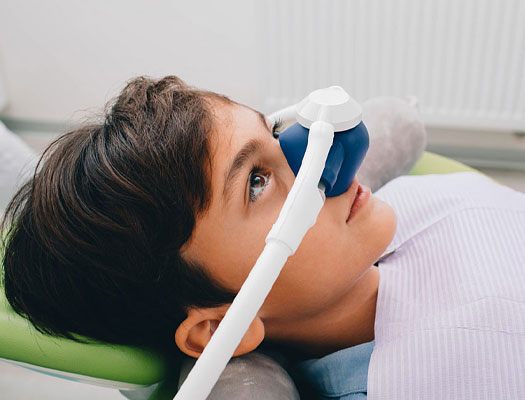Services
Pediatric Dentistry
We are a team of gentle and caring professionals who love kids and know how to approach pediatric dental procedures gently and compassionately. It’s important for your child to develop positive dental experiences early on because they will carry that perception with them for the rest of their life.
What Is Pediatric Dentistry?
Pediatric dentistry is a branch of dentistry that focuses on the oral health of infants, toddlers, and adolescent children. Pediatric dentists are specifically trained to address children’s unique dental needs.
A pediatric dentist has specialty training and experience with erupting teeth, the proper development of the oral cavity, and behavioral issues that stem from or show the need for an oral appliance or dental treatment from infancy to adolescence.
Special Needs
Our team has advanced training in adapting treatment techniques, modifying our dental environment, and implementing behavior management strategies tailored to the specific needs of each patient.
What is Special Needs Dentistry?
Special Needs Dentistry is about adapting dental practices and creating a supportive environment to meet the specific oral health needs of patients who require more than just standard dental care. This involves dentists having specialized training in understanding various conditions, modifying treatment techniques, using behavior management strategies while collaborating with parents and caregivers.
The goal is to improve oral health and overall well-being, ensuring that individuals with special needs receive quality dental care.
Sedation Dentistry
Young children and teens will naturally be apprehensive about many medical procedures, and this includes various dental operations. Even in some adults, the simplest or most routine approach can often require a certain level of comfort to relax the patient enough to properly carry out what is needed to be done. It is extremely beneficial for children to become used to dental procedures early on in their lives, as it will more likely reduce their anxiety as adults for more complicated operations.
What is Pediatric Sedation Dentistry?
Sedation is a common tool that is used in dentistry to relieve anxiety or stress from the patient. This not only makes them more agreeable, but it increases the safety of the procedure so that the patient does not harm themselves or move while state-of-the-art equipment is being used. Children are naturally more apprehensive, and some may be extremely frightened of what is about to happen.
The good news is that the earlier the child is accustomed to dental examinations, procedures, and other forms of preventative or restorative care, the more confident they will become as an adolescent and adult. Pediatric sedation is a much more in-depth solution than sedation that is used for general dentistry or more specialized procedures on adults. Pediatric dentists have undergone additional residency and training to become accustomed to dealing with the unique needs of the child, including the proper dosage.
Tongue Tie
Our pediatric dentist in Alpharetta, GA is experienced with all areas of pediatric dentistry, including the problem of tongue ties. This condition is more prevalent than you may have realized, affecting millions of children all over the world.
At Christy Haffner DMD Pediatric Dentistry, we strive to educate parents about all aspects of children’s dental needs, including tongue ties. Learn more about this condition, including symptoms and available treatment in our dental office.
What is Tongue Tie?
Tongue tie, officially called ankyloglossia, is a condition where the tongue is “tied” to the floor of the mouth. Tongue tie is a congenital condition, meaning that it exists at or dates from birth. Children don’t develop tongue tie. They are either born with it or will never have it.
It’s important to note that the tongue is naturally connected to the floor of the mouth. As the fetus develops and grows larger in the womb, the tongue and the floor of the mouth grow apart.
The tongue remains attached at the back. By the time the baby is born, the frenulum, which is the connective tissue between the tongue and the floor of the mouth, is sufficiently thin and elongated that the tongue can freely move. This movement enables eating, drinking, and speaking, as well as offering support to the lips and tongue in general.






